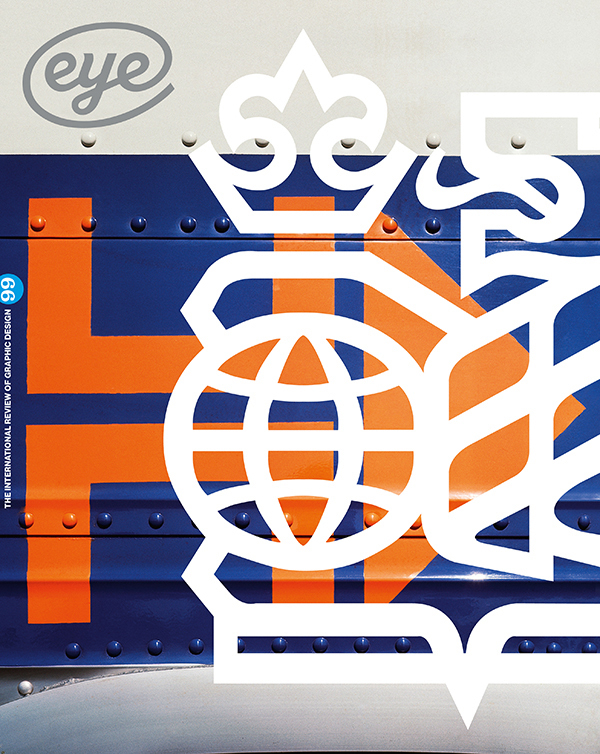Autumn 2019
The advocacy of Tschichold
Jan Tschichold and the New Typography: Graphic Design Between the World Wars
Exhibition: Bard Graduate Center, New York. Curated by Paul Stirton. 14 February – 7 July 2019. Catalogue by Paul Stirton. Design by Jocelyn Lau with art direction by Kate DeWitt. Yale University Press, £25, $35
As Paul Stirton, the curator of ‘Jan Tschichold and the New Typography’ readily admits, his exhibition at the Bard Graduate Center is not primarily a presentation of the work of designer Jan Tschichold (1902–74). Instead, works by colleagues of Tschichold’s outnumber examples by Tschichold, which are shown in a single small room. The examples of Tschichold’s work, which include calligraphy and book designs that pre- and post-date his most intense period of Modernist zeal, prove his talent and reveal the range of his activities beyond promotion of the revolution in graphic design known as the New Typography. Like the exhibition, the catalogue, also by Stirton, is not a catalogue raisonné of Tschichold’s design, but rather an examination of New Typography through the lens of Tschichold’s life.
While at first the visitor may be disappointed by a preponderance of designs by others, the works are from a collection gathered by Tschichold about 90 years ago, so he could be called the exhibition’s posthumous co-curator. During the 1920s and 30s Tschichold regularly requested samples from talented allies and used the submissions to illustrate articles, books, and lectures about the New Typography. Every exhibition needs compelling objects to display, and Stirton cleverly used the Tschichold collection, now held by the Museum of Modern Art in New York, to present striking designs by famous names such as El Lissitzky, Piet Zwart, Kurt Schwitters, and Herbert Bayer.
While this exhibition acknowledges Tschichold’s skill as a calligrapher and typographer, it places greater emphasis on his role as a liaison between proponents of Modernist design. Prominently displayed at the beginning of the exhibition are Tschichold’s two famous publications about the New Typography: Elementare Typographie (1925), and Die neue Typographie (1928). These texts, written when Tschichold was in his twenties, advocate Modernism and explicitly illustrate how to design in the new mode. Tschichold’s writing brought him to prominence and helped convince many designers of the supposed superiority of Modernist typography. As Stirton elucidates in the catalogue, the practical nature of Tschichold’s advice reveals his durable connections to commercial design and, interestingly, his minimal connection to the Bauhaus.
During this hundreth anniversary year of the founding of the Bauhaus, amid symposia and exhibitions about the design school’s importance, it is notable that the Bard Graduate Center exhibition downplays the significance of the Bauhaus in the history of graphic design. In the catalogue, Stirton traces designs and designers to varied origins outside of the Bauhaus, including Frankfurt, Magdeburg, Prague and Budapest, and describes the influence of the New Typography on advertising design. The Bauhaus was certainly connected to Modernist circles, but many other graphic designers took up the cause of Modernism around the same time as – and even before – the Bauhaus. This comes as a revelation to those of us steeped in the primacy of the Bauhaus.
Cover of Jan Tschichold and the New Typography.
Top. Spread showing a 1927 Tschichold poster for the Phoebus Palast cinema in Munich, Germany.

The exhibition ‘Jan Tschichold and the New Typography’ is a scholarly, beautifully designed exploration of graphic design history, while it is also an example of continued preoccupation with Modernism and the parsing of the activities of a small group of men (and even fewer women) in Europe in the middle of the last century. Why are historians so intent on resolving details of this important but entrenched timeline of European Modernism? Who is this exhibition for and why is it happening now?
The exhibition catalogue, designed by Bard Graduate Center staffers Jocelyn Lau and Kate DeWitt, clarifies that the exhibition accompanies, or supplements, the catalogue, which explains that the goal of the project is to ‘shed some light’ on a design movement that ‘set out to revolutionize the way we communicate through print’.
Thus Stirton widens his scope, and the catalogue places Tschichold into context admirably, humanising the dogmatic typographer by describing his youthful rebellion against historical styles and the personal danger that he, his family, and other designers faced in prewar Germany. Similarly, Stirton’s survey of design beyond the Bauhaus is a useful addition to the history of graphic design.
If it is true that the postmodern world lacks inspiration and that designers are lost, now that Modernist ideals are fading, then both the catalogue and the Bard Graduate Center exhibition are a sharp reminder of what the future used to be.
Followers of the New Typography wrote numerous manifestos about how dynamic, accessible typography can improve future lives. Is the effort ongoing, or a failure?
Doug Clouse, designer and partner in The Graphics Office, New York
First published in Eye no. 99 vol. 25, 2019
Eye is the world’s most beautiful and collectable graphic design journal, published for professional designers, students and anyone interested in critical, informed writing about graphic design and visual culture. It is available from all good design bookshops and online at the Eye shop, where you can buy subscriptions and single issues.

